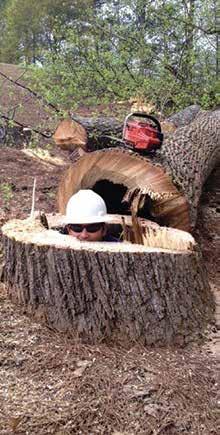
3 minute read
Palmetto Hall Golf & Country Club
A Peak at Palmetto Hall Golf and Country Club’s Environmental Efforts
South Carolina is home to more than
350 golf courses, 23 of which are located on Hilton Head Island. Amongst these courses is Audubon International certified member, Palmetto Hall Golf and Country Club, a 36-hole premier golf facility nestled in the low country, minutes from the Atlantic Ocean. As you can imagine, environmental sustainability is of utmost importance in a sensitive setting like an island. Through the Audubon Cooperative Sanctuary Program for Golf (ACSP-G), courses receive educational materials and are encouraged to expand their sustainability efforts while pursuing 3rd party verification of their initiatives. Palmetto Hall Golf and Country Club achieved certification as an Audubon International Sanctuary in 2015 after the completion of the following six focus areas: environmental planning, chemical use reduction and safety, wildlife habitat management, water conservation, water quality management, and outreach and education. Audubon International certification is unique in that each focus area is applicable to all property types and each member has the opportunity to utilize their own imagination to expand or highlight certain projects. At Palmetto Hall Golf and Country Club, their chemical use reduction and safety, wildlife habitat management, and outreach and education are top notch. Chemical Use Reduction and Safety
One of the most important and impactful ways to improve sustainability is through a well thought out Integrated Pest Management (IPM) plan. IPM is best described as “a process you can use to solve pest problems while minimizing risks to people and the environment. IPM can be used to manage all kinds of pests anywhere–in urban, agricultural, and wildland or natural areas” (University of California). Since golf courses often cover large tracts of land, there’s a lot of room to make strides in the Chemical Use Reduction and Safety focus area. Palmetto Golf and Country Club does this in 3 different ways: 1) Utilizing the Environmental
Impact Quotient to identify worker, consumer, and ecological risk of active ingredients and applications. 2) Reducing managed turf to reduce inputs like fertilizers, water and chemical applications. 3) Setting thresholds for diseases and pests to identify when a pest has reached a level that requires action such as a treatment or removal. Since becoming involved with the
ACSP for Golf program, the courses have seen a remarkable decrease in acreage that receives inputs such as irrigation and pesticides.
In addition to 36-holes of golf, Palmetto Hall Golf and Country

Photo compliments of Palmetto Hall Golf & Country Club’s social media pages
Club has many wetlands, ponds and marshes throughout the property that provide various habitats for wildlife, and to supplement this natural habitat, Palmetto Hall also provides nesting structures for Bluebirds and Purple Martins as one of their Wildlife Habitat Management initiatives. Through their sound management practices, Palmetto Hall continues increasing local awareness of the course’s ecosystem diversity and concern for the surrounding wildlife and vegetation. In fact, the club has established a bird monitoring program where participating members meet periodically to collect and record data on nesting success as part of their Outreach and Education efforts. In addition, Palmetto Hall proudly displays their Audubon International certified status on their scorecards. More about ACSP-G & what you can do on your course. The ACSP for Golf certification is a tool to educate and assist golf clubs minimize their environmental footprint through best management practices, while at the same time maintaining a quality golf experience for patrons. To learn more about how your local golf course can gain recognition for your environmental efforts and learn how to expand your initiatives through Audubon International’s numerous environmental certifications, visit www.auduboninternational.org.












